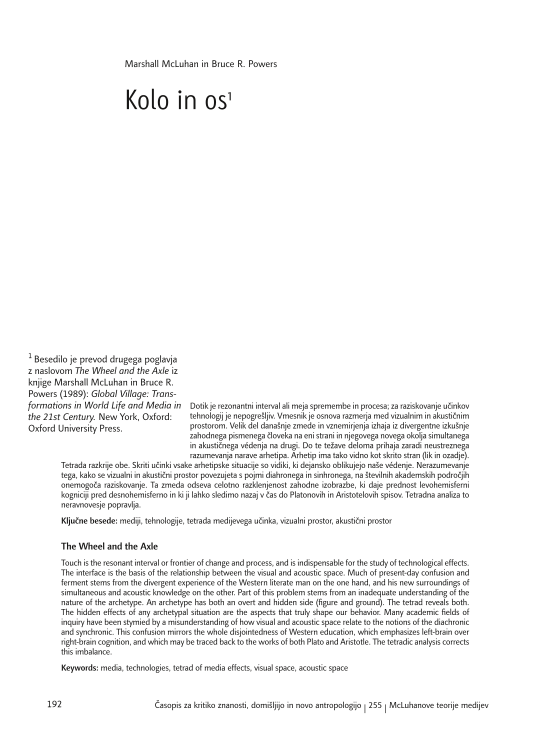Touch is the resonant interval or frontier of change and process, and is indispensable for the study of technological effects. The interface is the basis of the relationship between the visual and acoustic space. Much of present-day confusion and ferment stems from the divergent experience of the Western literate man on the one hand, and his new surroundings of simultaneous and acoustic knowledge on the other. Part of this problem stems from an inadequate understanding of the nature of the archetype. An archetype has both an overt and hidden side (figure and ground). The tetrad reveals both. The hidden effects of any archetypal situation are the aspects that truly shape our behavior. Many academic fields of inquiry have been stymied by a misunderstanding of how visual and acoustic space relate to the notions of the diachronic and synchronic. This confusion mirrors the whole disjointedness of Western education, which emphasizes left-brain over right-brain cognition, and which may be traced back to the works of both Plato and Aristotle. The tetradic analysis corrects this imbalance.




